Introduction
Deer proof shade plants: You wake up excited to check on your beautiful shade garden, only to find that deer have turned your prized hostas into a salad bar overnight. Sound familiar? If you’ve ever felt like you’re in an endless battle with these graceful but hungry garden visitors, you’re definitely not alone.
Here’s the thing: you don’t have to choose between having deer around and having a gorgeous garden. Deer proof shade plants are your secret weapon for creating spaces that look amazing while staying naturally protected. These clever plants have figured out how to thrive in low light while keeping deer at bay through their own built-in defence systems.
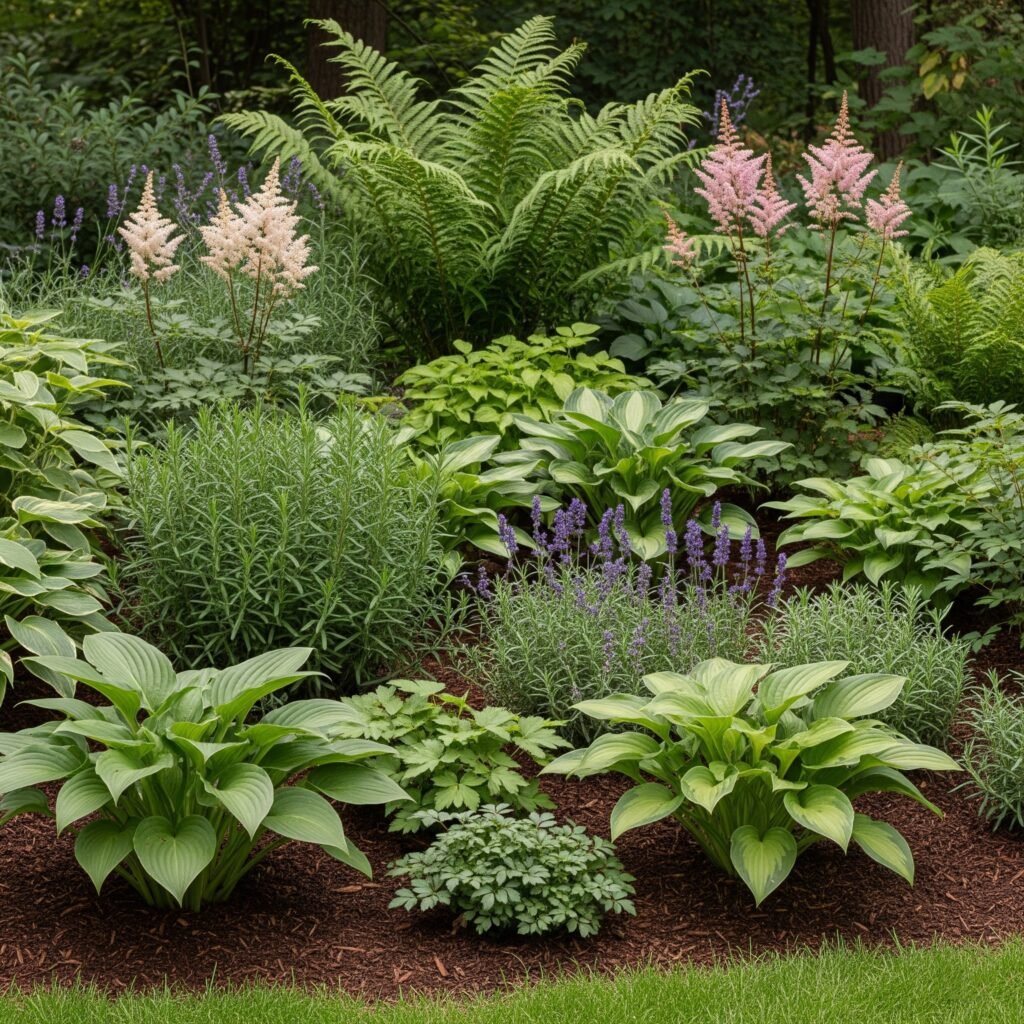
Top 10 Deer Proof Perennial Shade Plants
These are the workhorses of any deer-resistant shade garden reliable, beautiful, and naturally equipped to handle both deer and shade. I’ve seen these plants thrive in gardens across the country while staying completely untouched by even the hungriest deer.
1. Astilbe (Astilbe species)
Those Gorgeous Feathery Flowers That Light Up Shade I absolutely love astilbe – it’s like having colourful feather dusters dancing in your garden! These incredible perennials create the most stunning display with their fluffy plumes in whites, pinks, reds, and purples that seem to glow in shaded spots. The best part? Deer find their slightly bitter taste and tough texture completely unappealing.
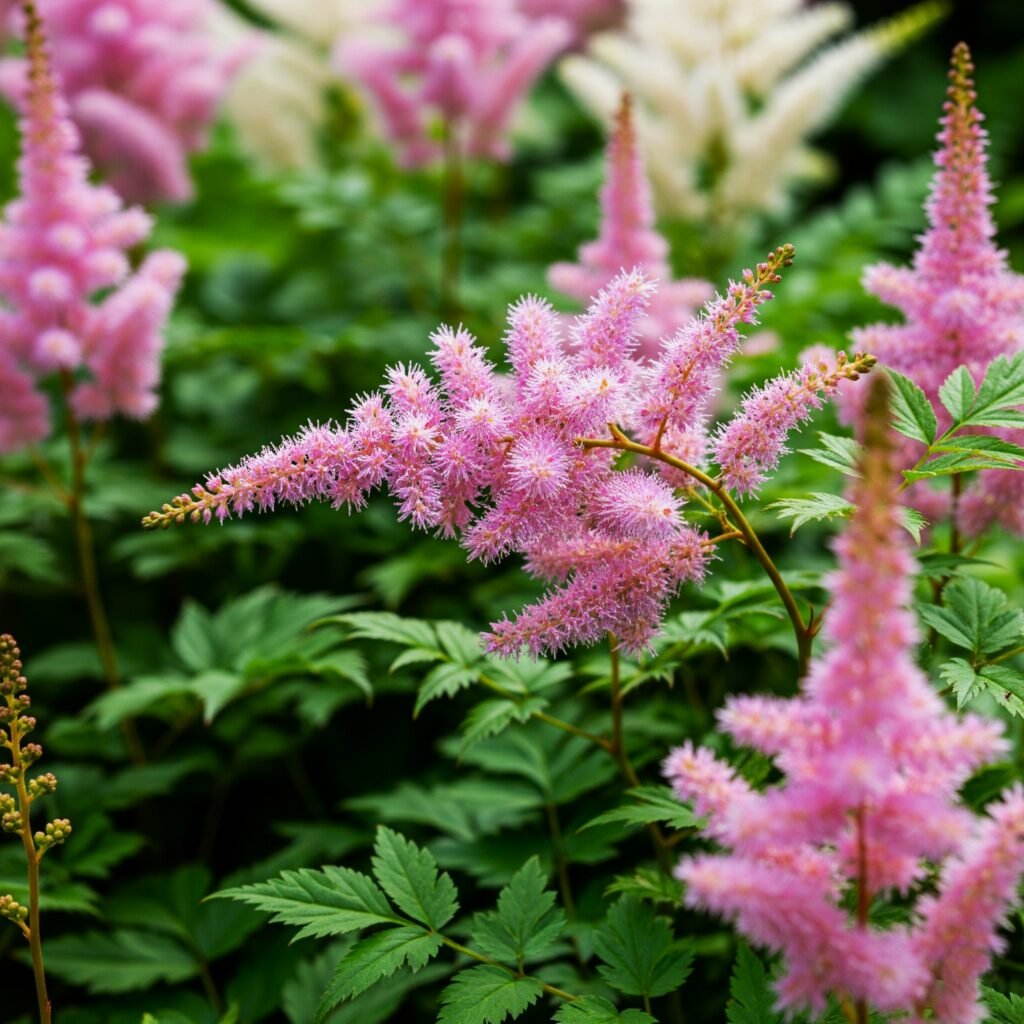
2. Japanese Painted Fern (Athyrium niponicum)
Nature’s Own Artwork for Your Shade Garden This fern is honestly like having a living piece of art in your garden. The silvery grey fronds are painted with the most beautiful strokes of green and deep purple , it’s like nature took a paintbrush to each leaf! What I love most is how it seems to actually glow in dark corners, making spaces that used to look forgotten suddenly feel magical.
Related : 25 Stunning Ornamental Grasses Plants for Your Landscape
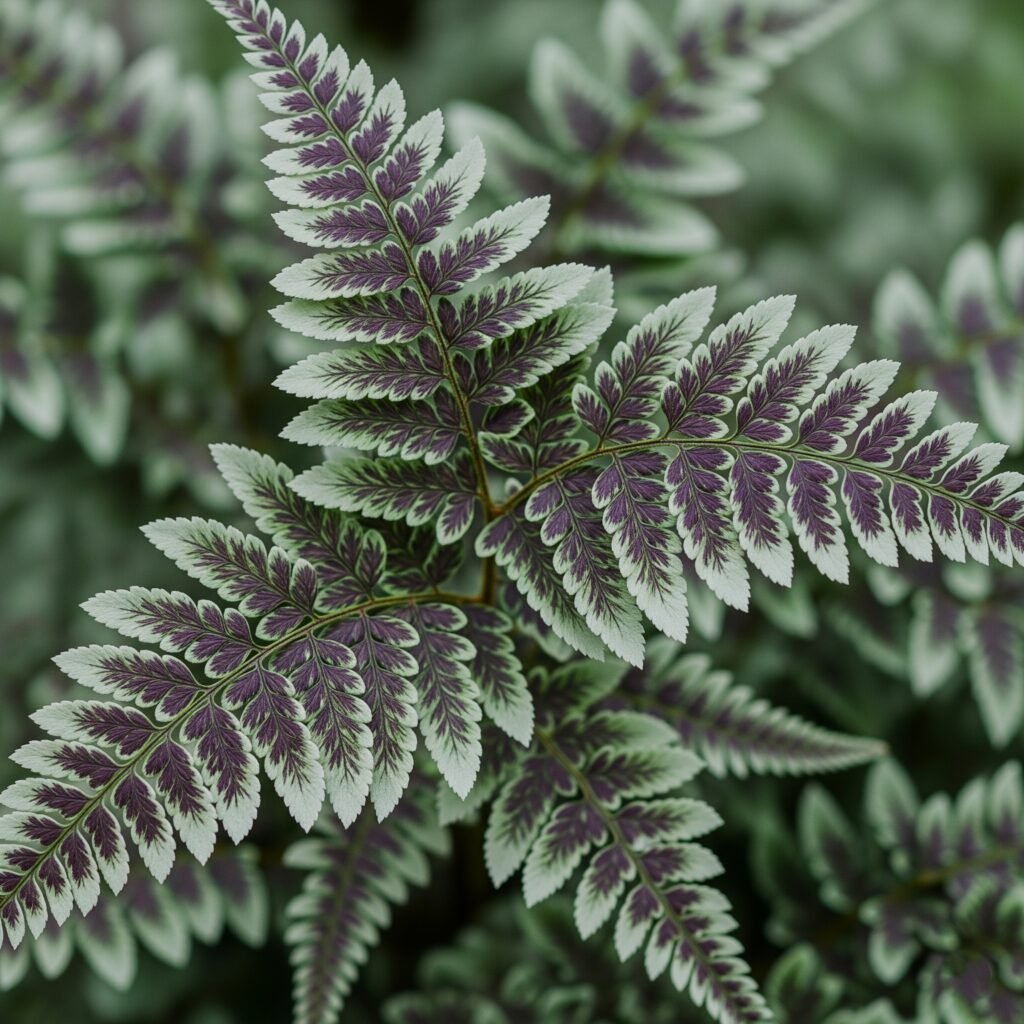
3. Bleeding Heart (Dicentra spectabilis)
The Romantic Heart-Shaped Flowers Deer Leave Alone There’s something so romantic about bleeding hearts, those perfect little pink or white hearts dangling from arched stems like nature’s own jewellery. I always tell gardeners that if you want a conversation starter, plant bleeding hearts! People stop and stare at those unique flowers every time.
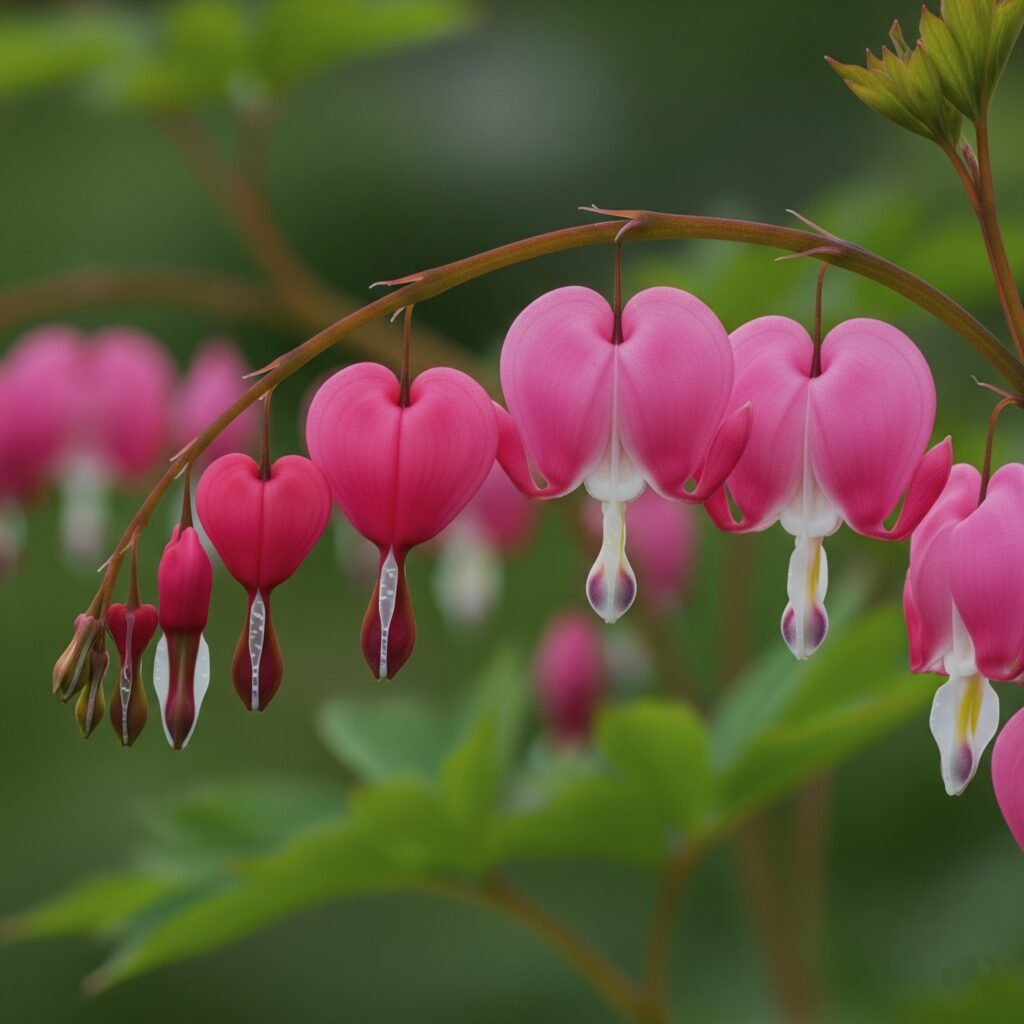
4. Brunnera (Brunnera macrophylla)
Heart-Shaped Leaves That Sparkle in Spring Brunnera has become one of my absolute favourite deer proof shade plants because it gives you the best of both worlds: incredible foliage and magical spring flowers. Those heart-shaped leaves come in the most amazing patterns, from solid green to silvery variegations that look like they’ve been hand-painted.
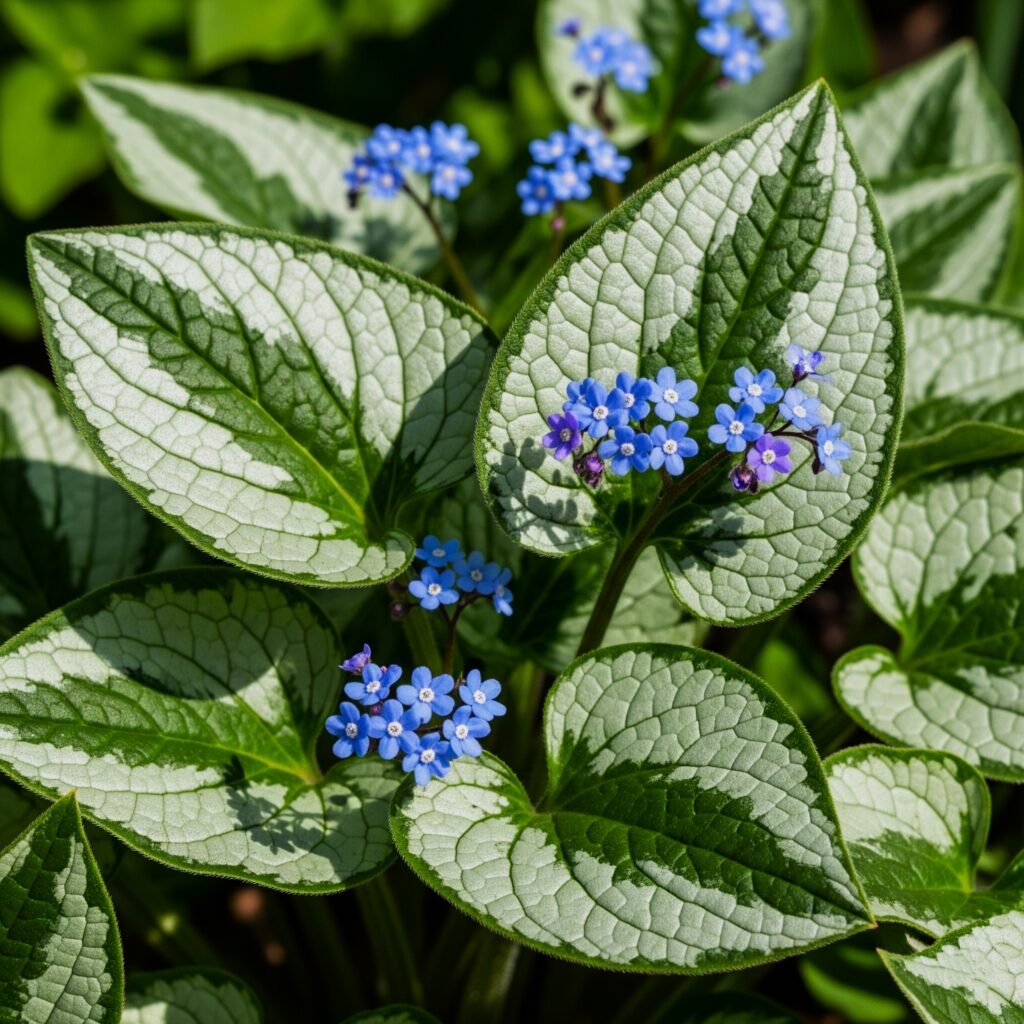
5. Heuchera (Coral Bells)
A Rainbow of Foliage Colors That Never Stop Amazing If you want to add serious colour to your shade garden, heuchera is your answer! I’m constantly amazed by the incredible range of leaf colours: deep burgundy, bright lime green, silvery purple, orange, and combinations that look like someone spilt paint in the best possible way. The delicate flower spikes that appear in late spring are beautiful, but honestly, it’s all about those leaves that keep your garden interesting all season long.
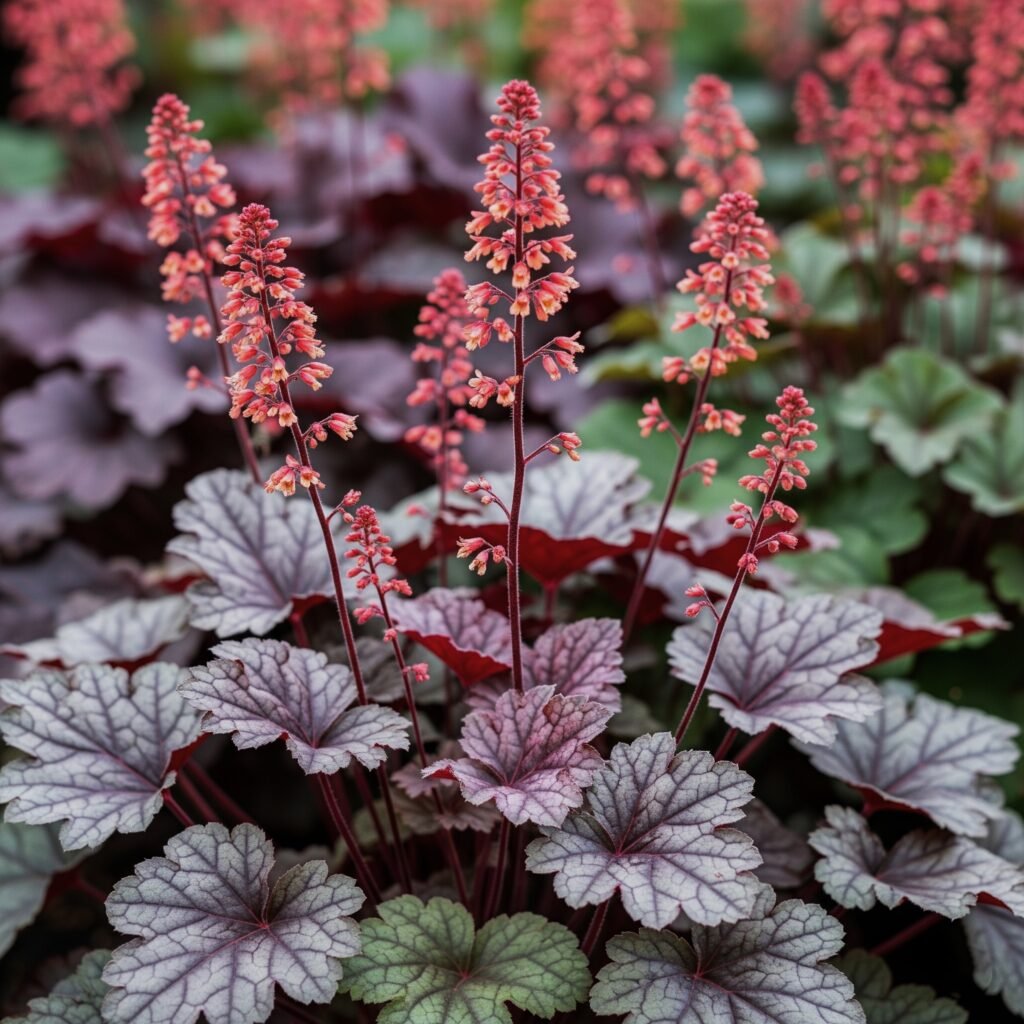
6. Lungwort (Pulmonaria officinalis)
Spotted Leaves with the Sweetest Spring Flowers Lungwort might have an unfortunate name, but it’s absolutely charming in the garden! Those spotted leaves look like someone sprinkled silver paint across a green canvas, and the spring flowers are pure magic; they often start pink and turn blue as they age, giving you multiple colours on the same plant.
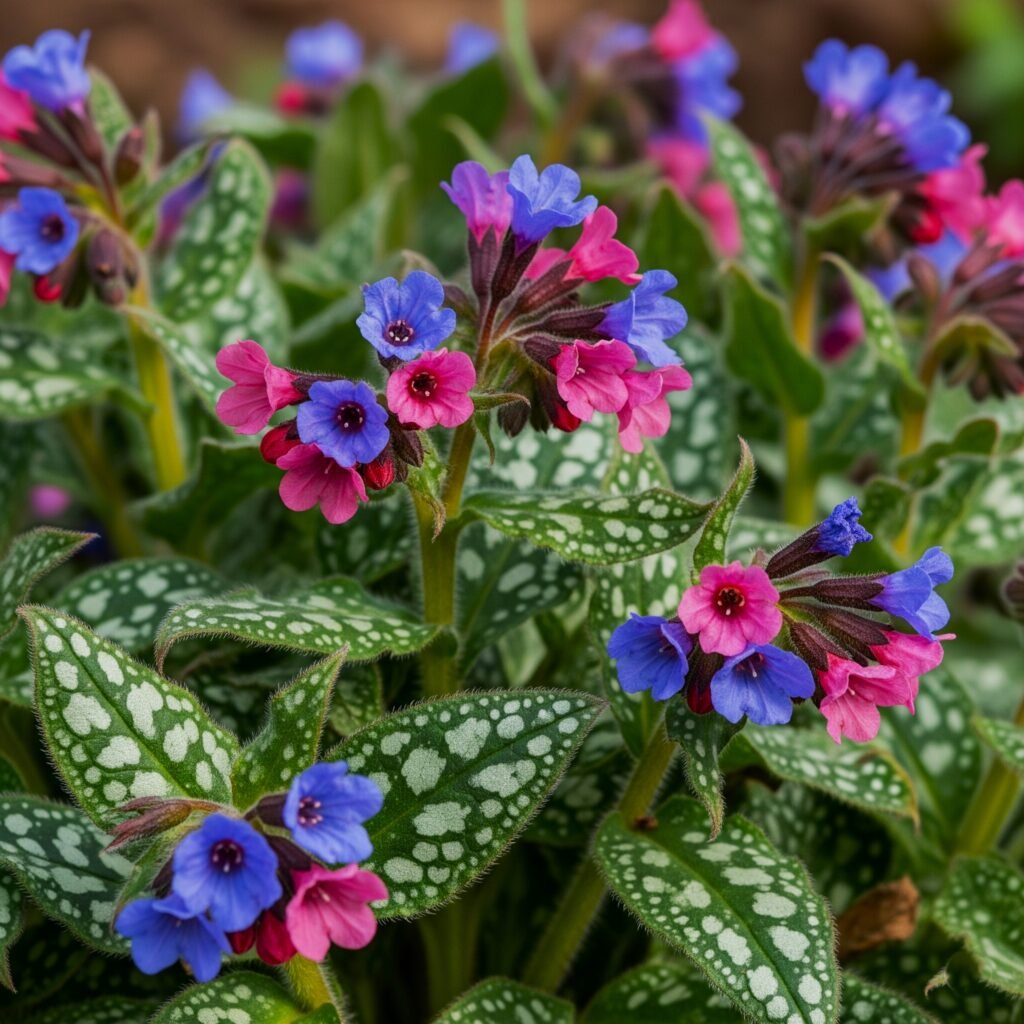
7. Hellebore (Helleborus orientalis)
Winter Blooming Magic That Deer Never Touch Hellebores are honestly like having flowers in your garden when everything else is sleeping! These amazing plants bloom in the depths of winter with the most elegant cup shaped flowers in whites, pinks, purples, and even near-black shades that are absolutely stunning against snow.
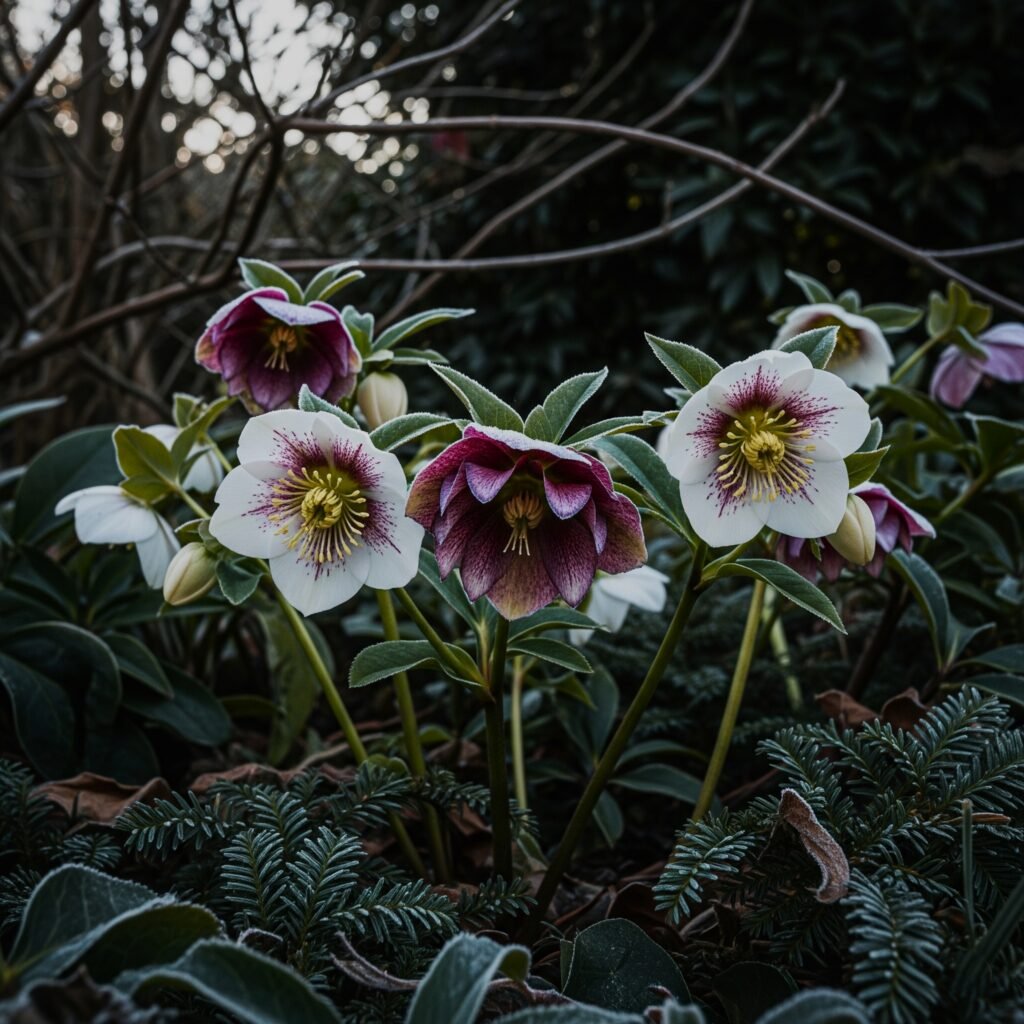
8. Lady Fern (Athyrium filix-femina)
Delicate Fronds That Bring Peace to Any Garden There’s something so calming about a lady fern’s delicate, lacy fronds gently swaying in the breeze. This native beauty creates that peaceful woodland feeling that makes you want to sit and relax in your garden. What I love is how adaptable it is ,it handles different moisture levels and still looks graceful and fresh all season.
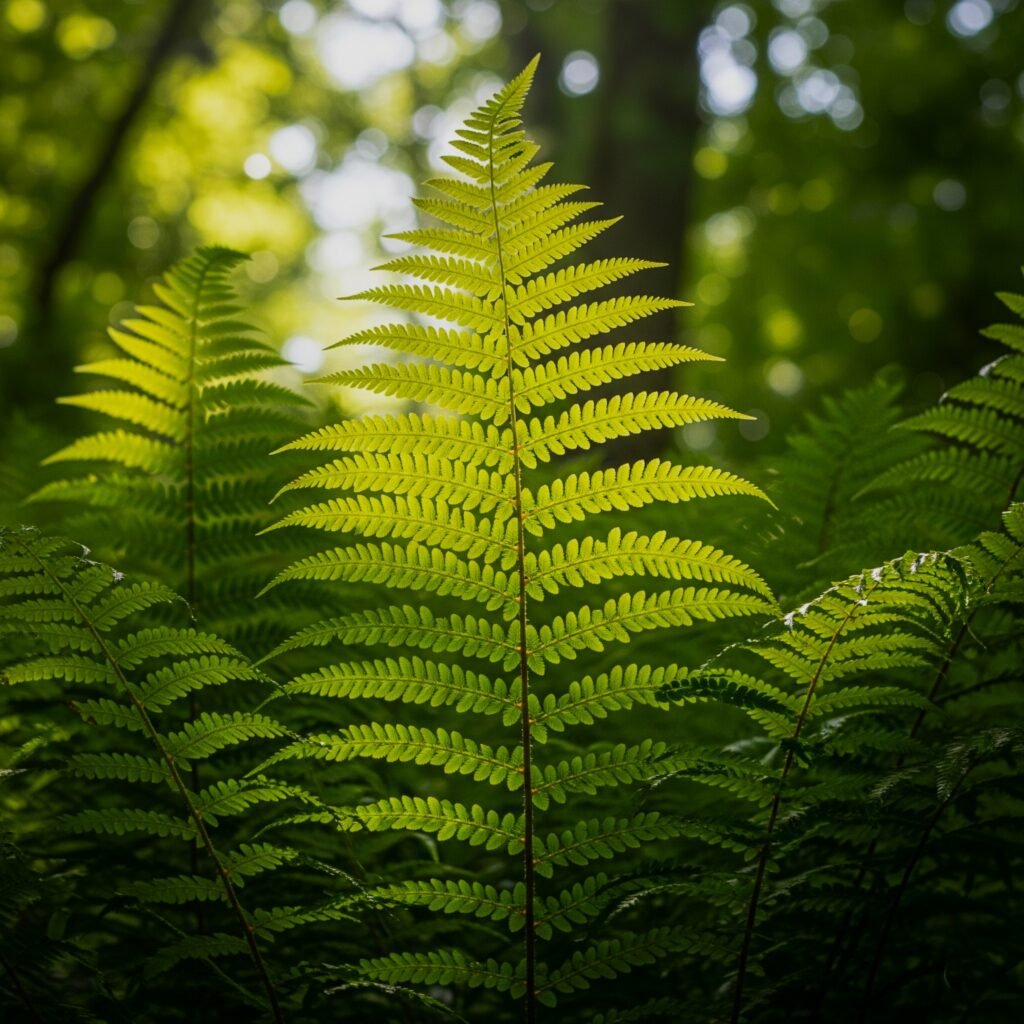
9. Wild Ginger (Asarum canadense)
The Ultimate Groundcover for Deep Shade Wild ginger is one of those secret weapons for really difficult shady spots where nothing else wants to grow. Those beautiful heart-shaped leaves create this lush carpet that makes even the darkest corners look intentional and welcoming. The leaves have this wonderful texture that deer find completely unappealing, plus it’s a native plant, so it naturally belongs in our landscapes.
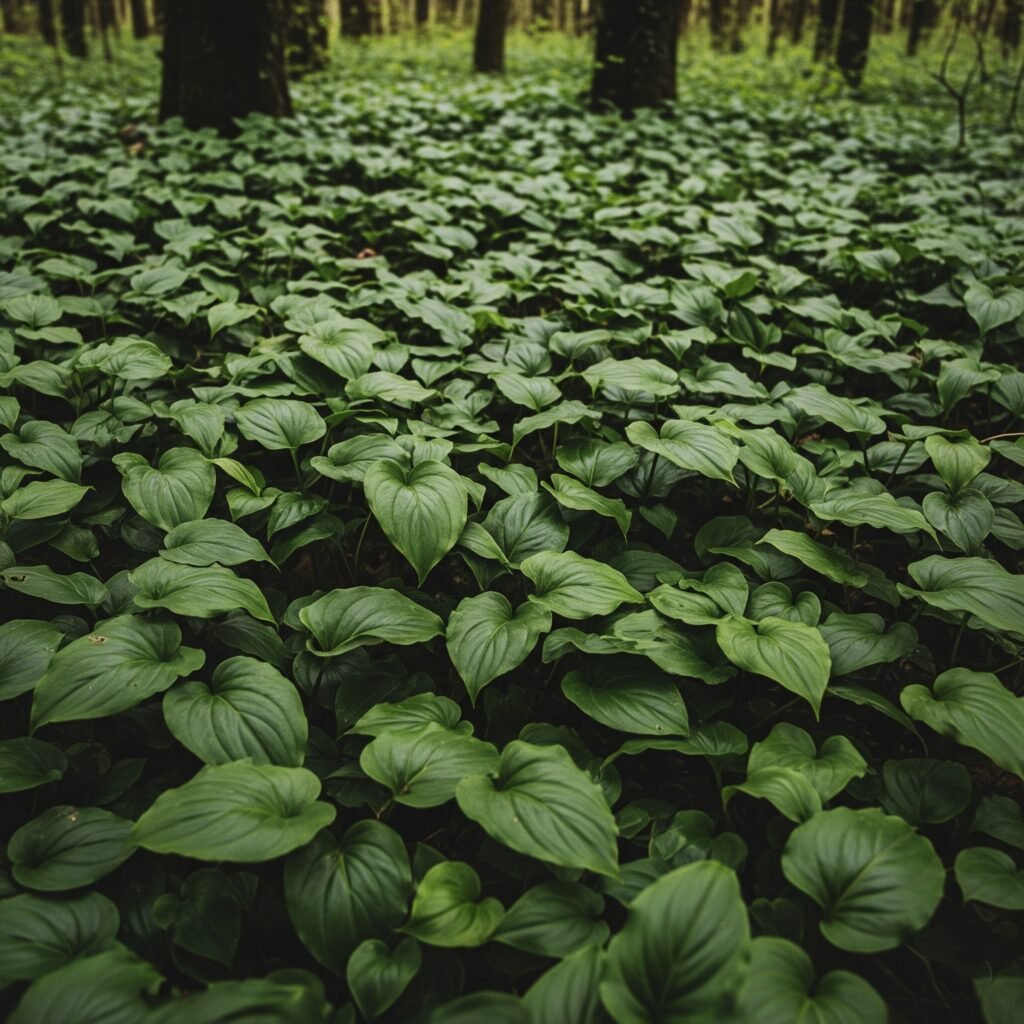
10. Barrenwort (Epimedium grandiflorum)
Delicate Flowers and Tough-as-Nails Leaves Barrenwort is seriously underrated it’s one of the most elegant deer proof shade plants you can grow! Those delicate, spurred flowers in yellow, pink, white, or purple seem to float above the foliage like tiny orchids, and the heart-shaped leaflets often show beautiful bronze or red tints in spring and fall.

Best Deer-Resistant Ferns for Shade
Ferns are honestly like having nature’s own sculptural elements in your garden, and the best part is that deer find their texture completely unappetising! I’ve never seen a deer take even a tiny nibble from any fern, making them absolutely reliable deer proof shade plants.
11. Christmas Fern (Polystichum acrostichoides)
Evergreen Beauty That Works Year-Round Christmas fern is like having a reliable friend in your garden; it’s always there when you need it! Those sturdy, dark green fronds stay beautiful all winter long, providing structure when everything else has gone to sleep.
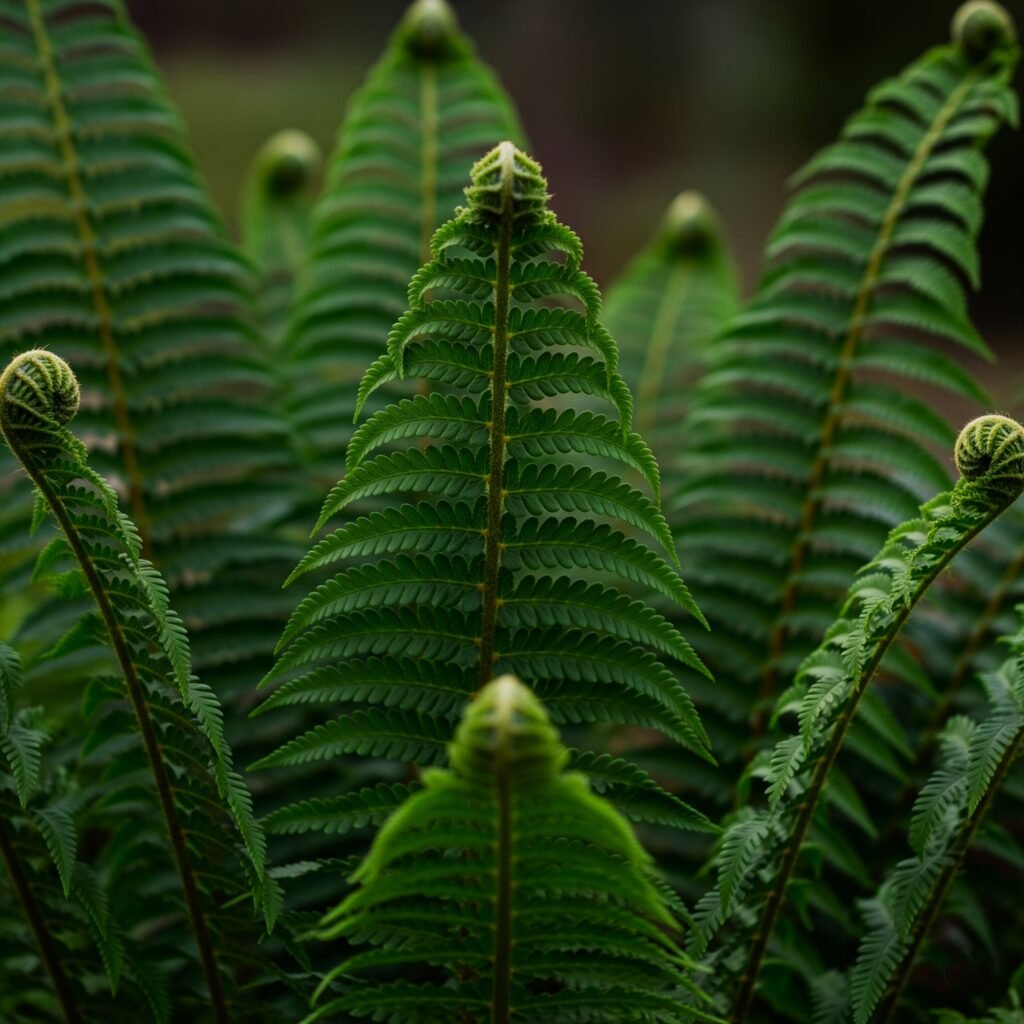
12. Royal Fern (Osmunda regalis)
The Crown Jewel of Shade Gardens Royal fern truly lives up to its name, this is the kind of plant that makes visitors stop and ask questions! It can get absolutely gigantic (like 3-6 feet tall and wide), which is great, because these incredible focal points in the shade garden turn typical into to-die-for.
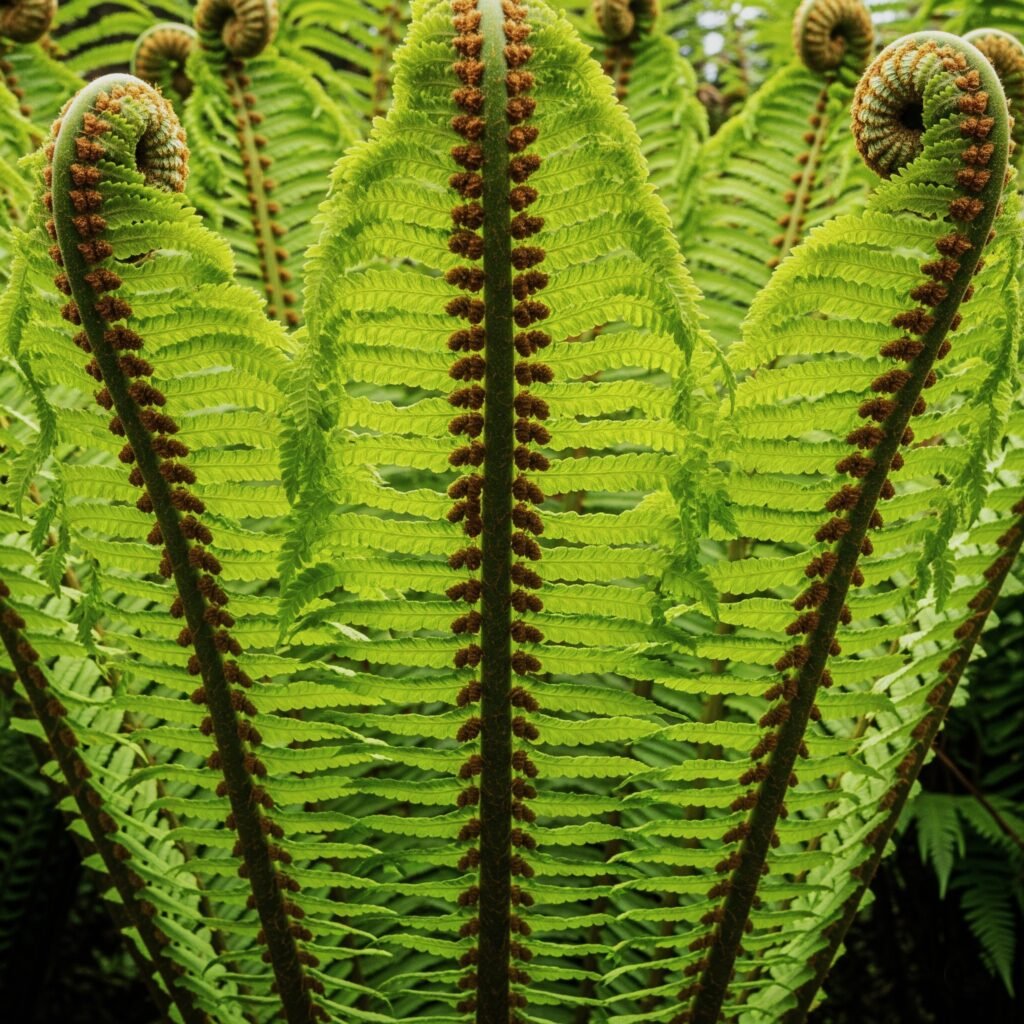
13. Cinnamon Fern (Osmundastrum cinnamomeum)
Nature’s Own Centerpiece with Cinnamon Spikes Cinnamon fern is one of those plants that makes people do double takes! Those bright green sterile fronds create these beautiful, graceful clumps, but it’s the cinnamon-colored fertile fronds shooting up from the center that really steal the show.
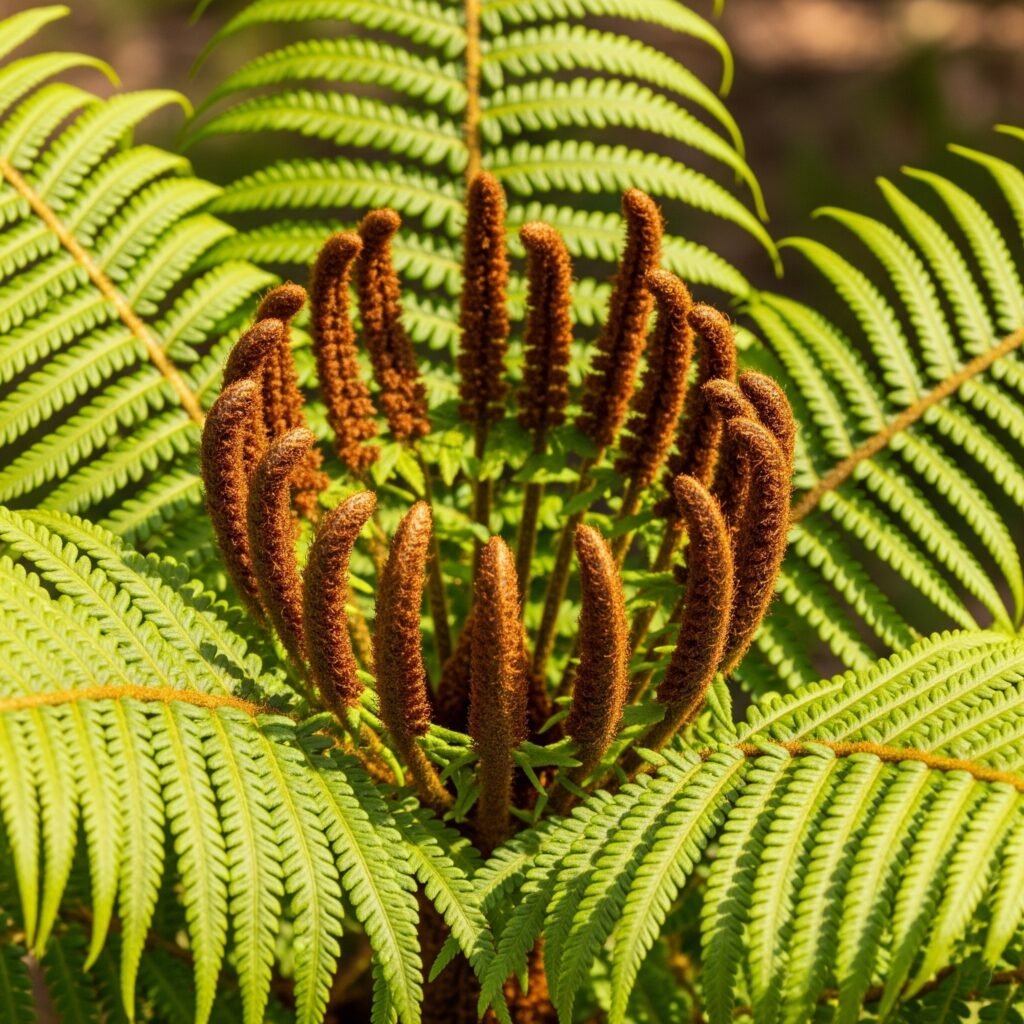
14. Ostrich Fern (Matteuccia struthiopteris)
Dramatic Size and Grace for Large Areas If you have space for something truly magnificent, ostrich fern is your plant! It’s because those giant, arching fronds really do resemble ostrich plumes and have the most amazing movement and drama to them in a garden.
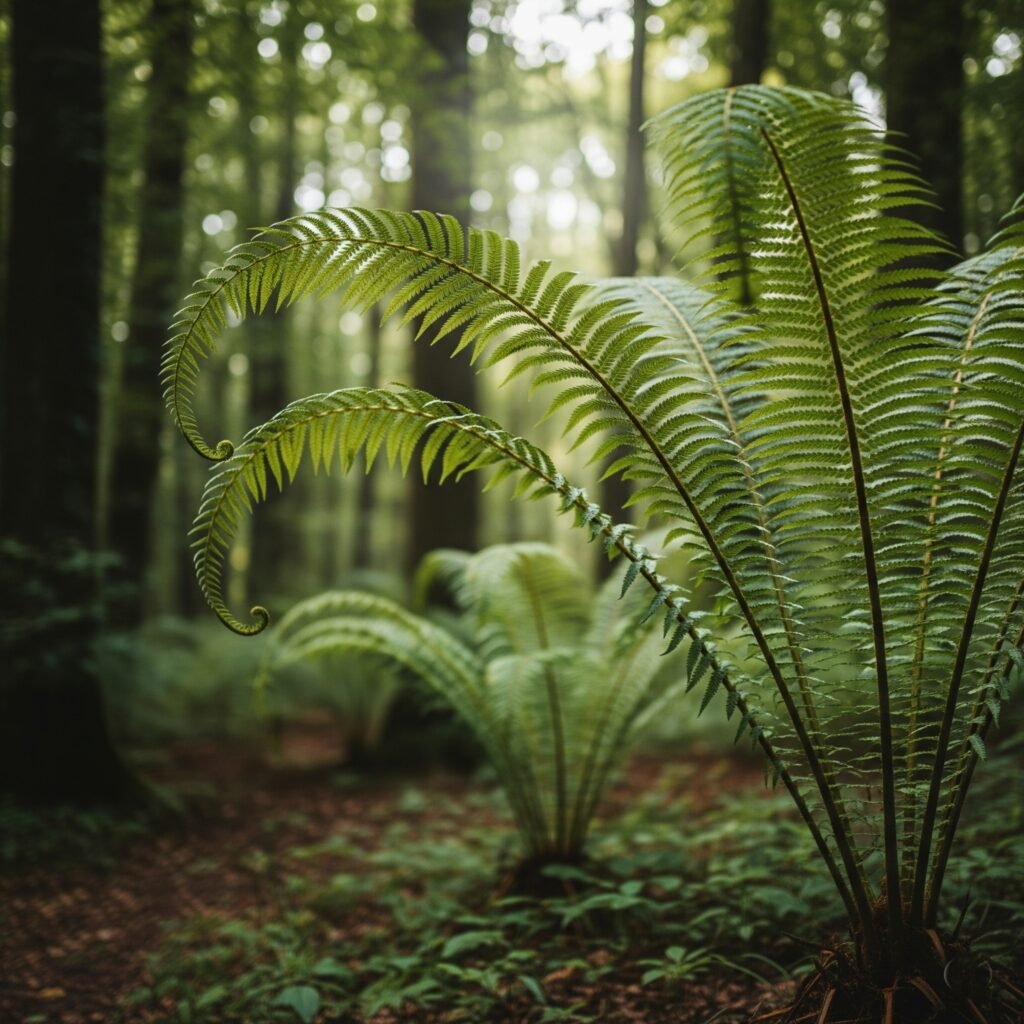
15. Maidenhair Fern (Adiantum pedatum)
Ethereal Beauty with Distinctive Black Stems Maidenhair fern is pure magic; those delicate, fan-shaped leaflets seem to float on their distinctive black stems like something from a fairy tale. I always tell people it’s like having butterflies that never fly away! What amazes me is how something so delicate-looking can be so tough and reliable in the garden.
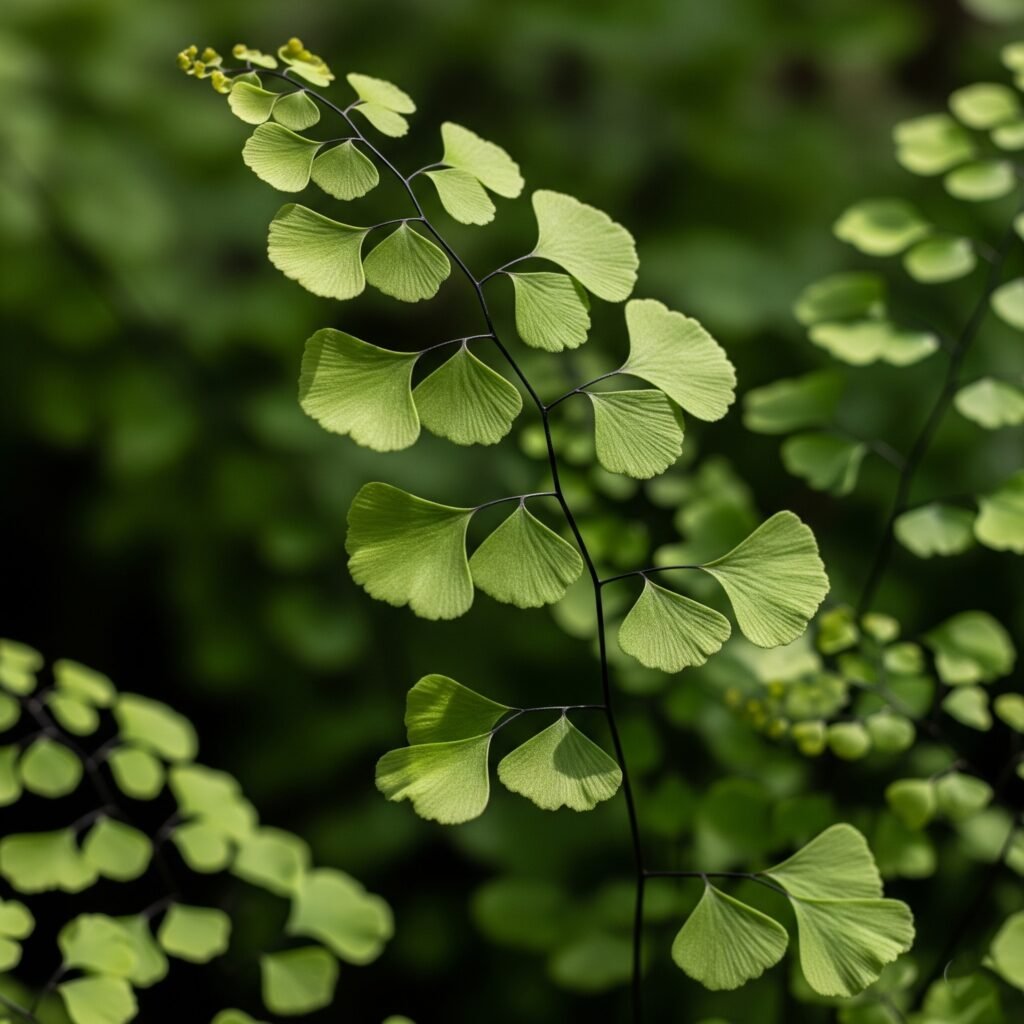
Flowering Shade Plants Deer Won’t Touch
Who says shade gardens can’t have amazing flowers? These blooming deer proof shade plants prove that you can have spectacular color even in low-light spots without worrying about deer turning your flowers into breakfast.
16. Toad Lily (Tricyrtis hirta)
Exotic Late-Season Orchid-Like Blooms Toad lily is hands-down one of the most unique flowers you can grow! Those intricate, orchid-like blooms with their spotted petals and exotic patterns appear just when most other plants are winding down for the year.
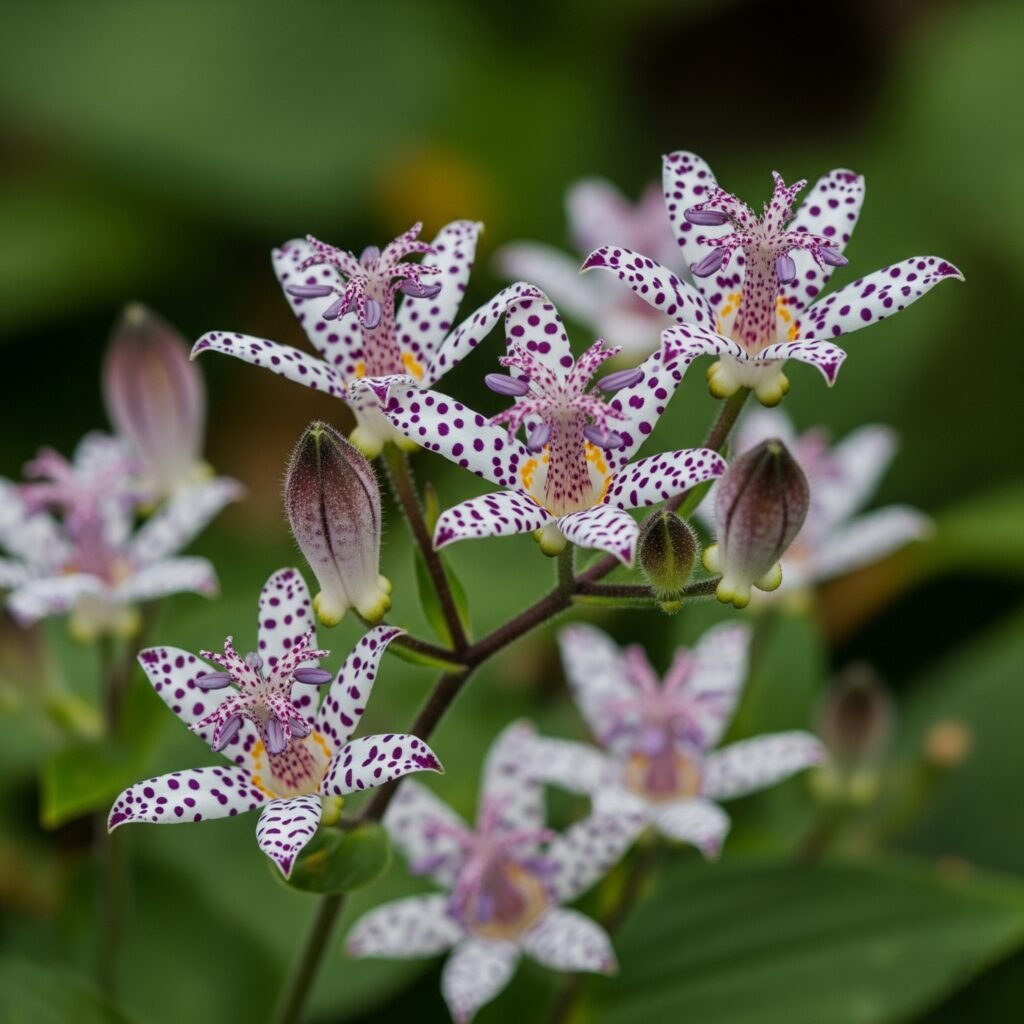
17. Bugbane (Cimicifuga racemosa)
Dramatic Bottle-Brush Flowers for Bold Impact Bugbane creates some of the most dramatic vertical elements you can add to a shade garden! Those tall, white bottle-brush flower spikes can reach impressive heights and create this incredible architectural presence that draws the eye from across the garden.
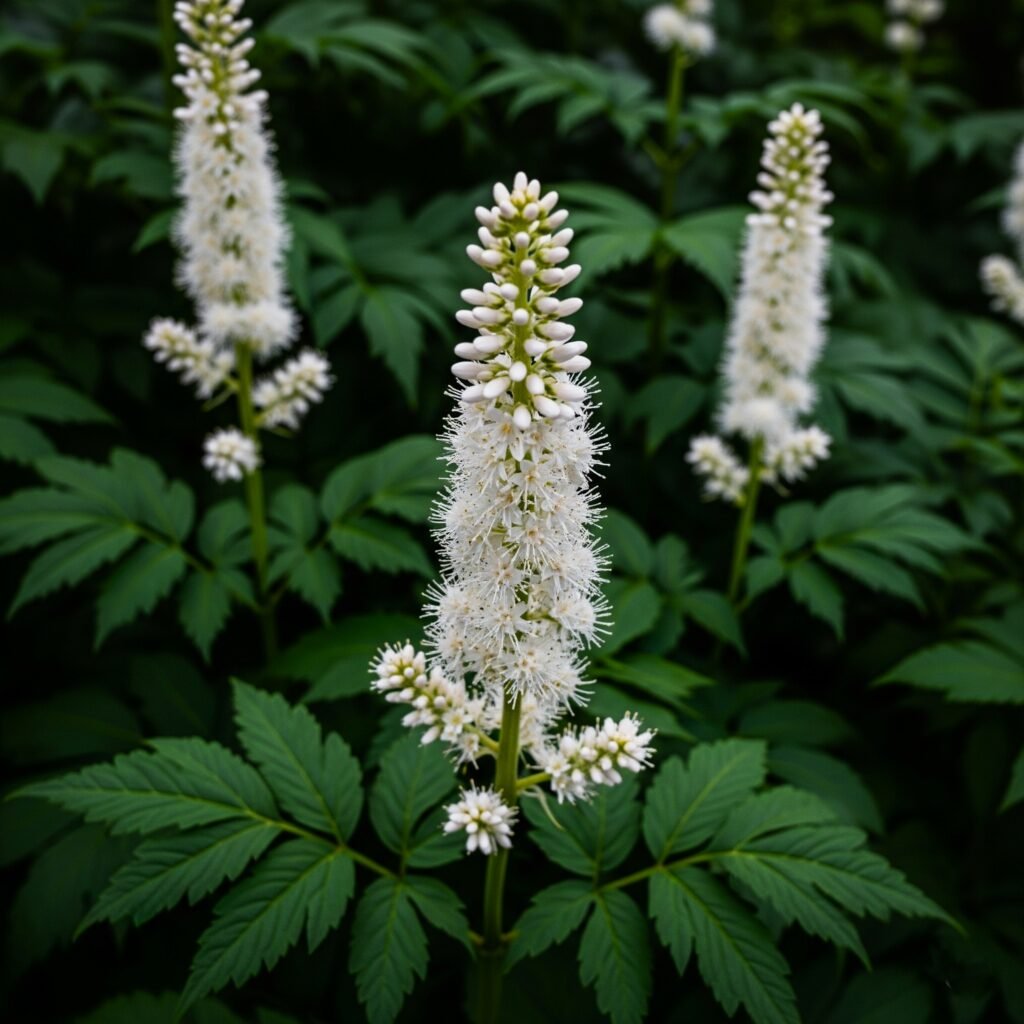
18. Japanese Forest Grass (Hakonechloa macra)
Graceful Movement That Brings Gardens to Life Japanese forest grass is like having a gentle waterfall of foliage in your garden! Those cascading, bamboo-like leaves create this incredible sense of movement and grace that makes the whole space feel more alive and dynamic.
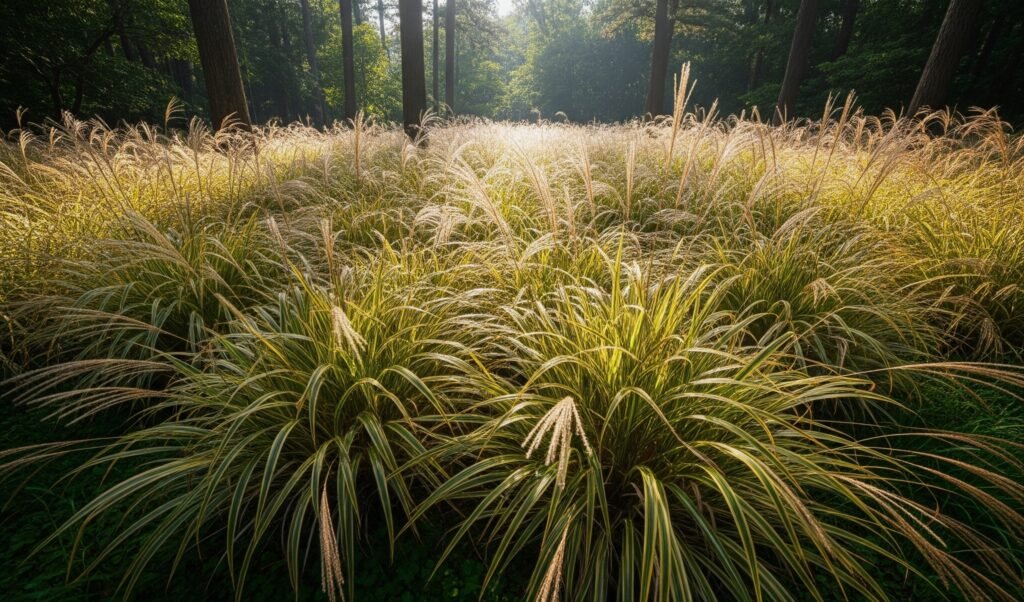
19. Coral Bells Flowers (Heuchera sanguinea)
Delicate Spikes That Dance Above Colourful Leaves While we talked about heuchera for foliage earlier, I have to give special mention to those delicate flower spikes! They rise above the colourful leaves like tiny fireworks in red, pink, white, or coral shades, creating this airy, dancing effect that brings so much life to the garden. Hummingbirds absolutely love them, which is always a bonus in my book.
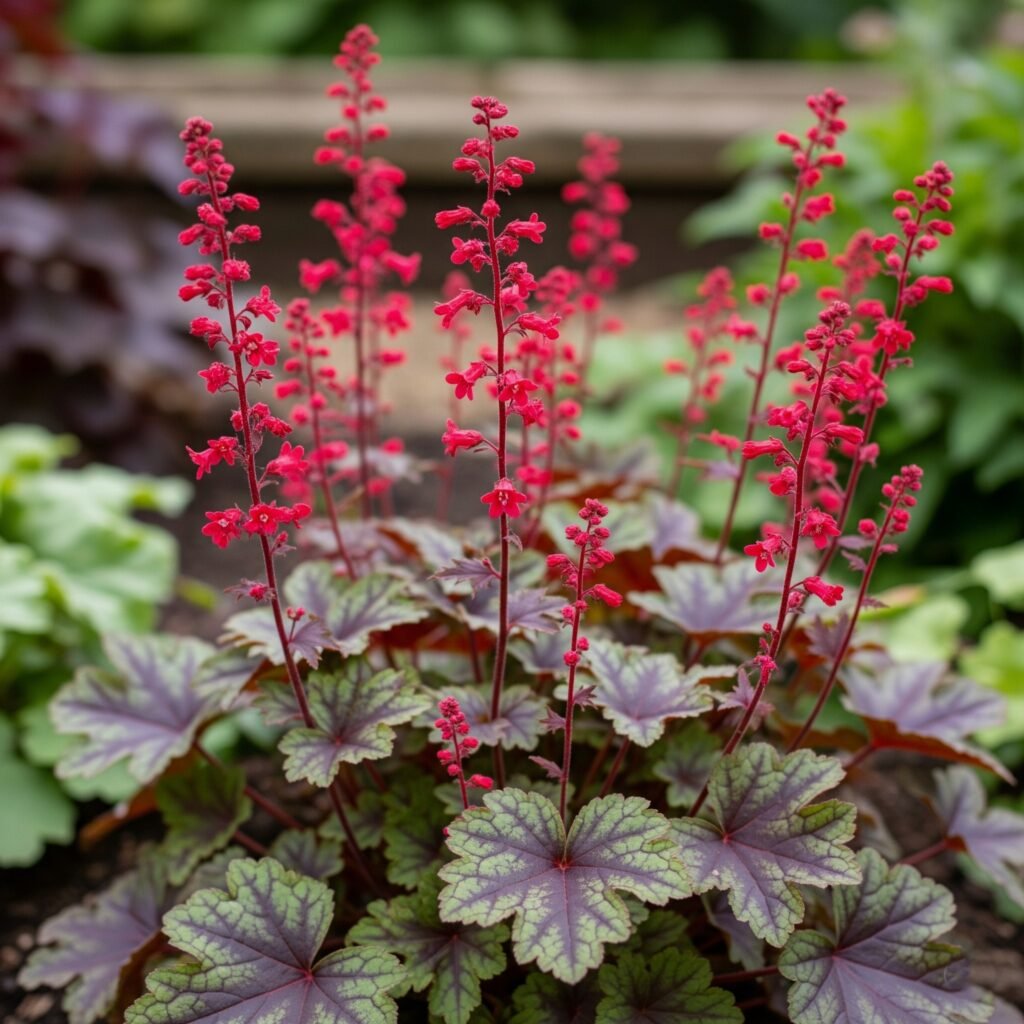
20. Foamflower (Tiarella cordifolia)
Native Groundcover with Clouds of White Blooms Foamflower creates some of the most enchanting spring displays you’ll ever see! Those delicate white flower spikes really do look like foam floating above the attractive, heart-shaped foliage with its beautiful maple-like patterns. It’s a native plant, so it naturally belongs in our landscapes and provides habitat for beneficial insects, while deer find the fuzzy flowers and slightly bitter leaves completely unappealing.
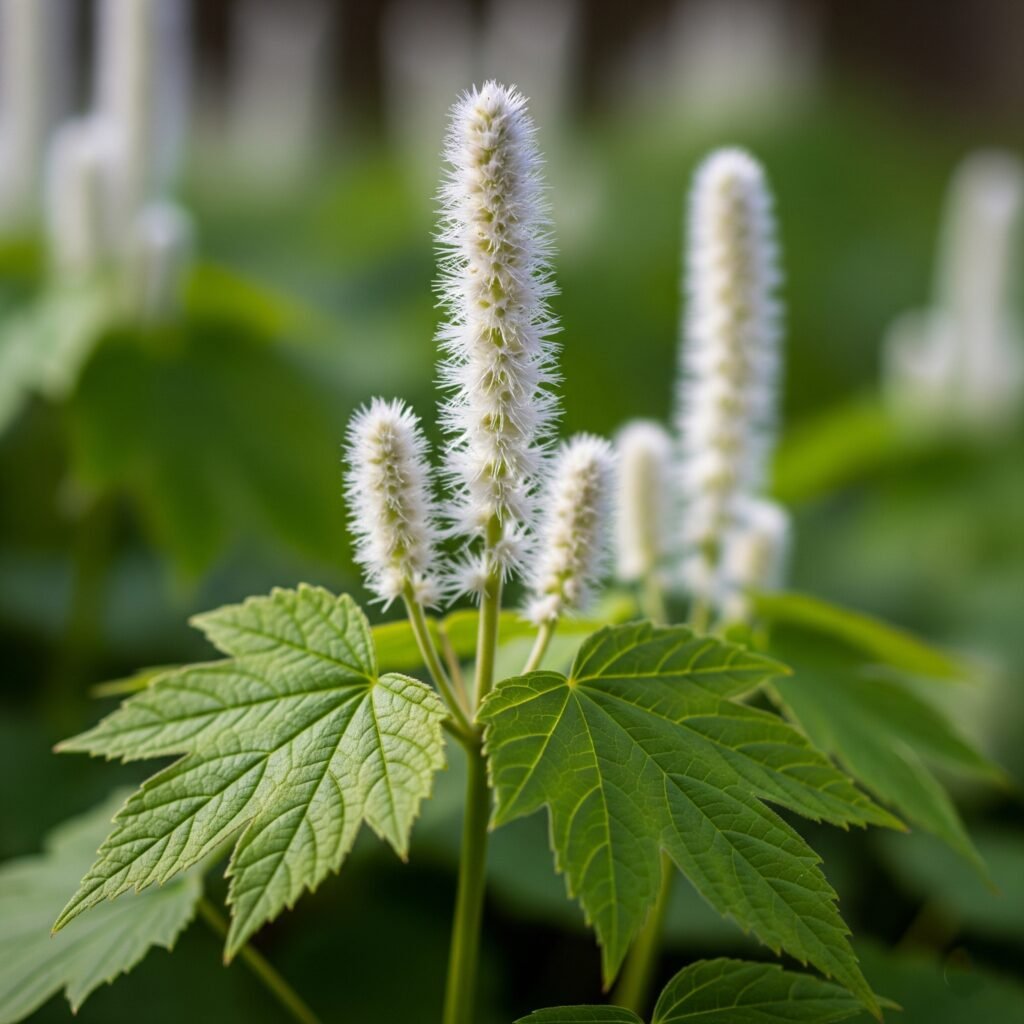
Ground Cover Options for Deer Protection
These low-growing deer proof shade plants solve one of the biggest challenges in shade gardening: covering bare ground under trees and in difficult spots while staying naturally protected from deer browsing.
21. Pachysandra (Pachysandra terminalis)
Classic Evergreen Coverage for the Toughest Spots Pachysandra is honestly one of the most reliable workhorses in the shade garden world! Those glossy, dark green leaves create dense coverage that stays beautiful year-round, and the small white flower spikes in early spring are a sweet bonus.
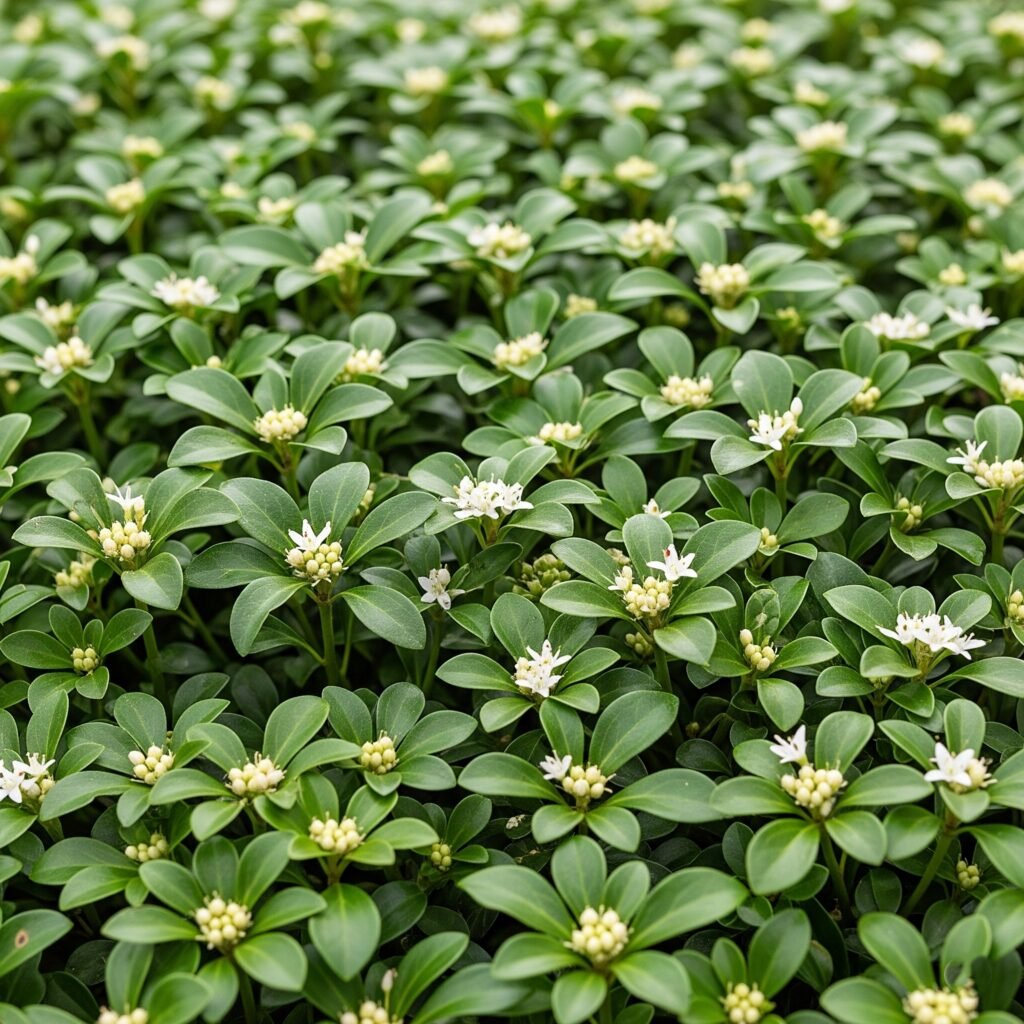
22. Lamium (Lamium maculatum)
Shimmering Variegated Leaves That Illuminate Shadows Lamium is definitely a case of having natural night lights in your shaded garden. Those heart-shaped leaves, those silver centers, and the green edges they absolutely glow in darker places, turning them from somewhere that previously looked forgotten to someplace you want to be.
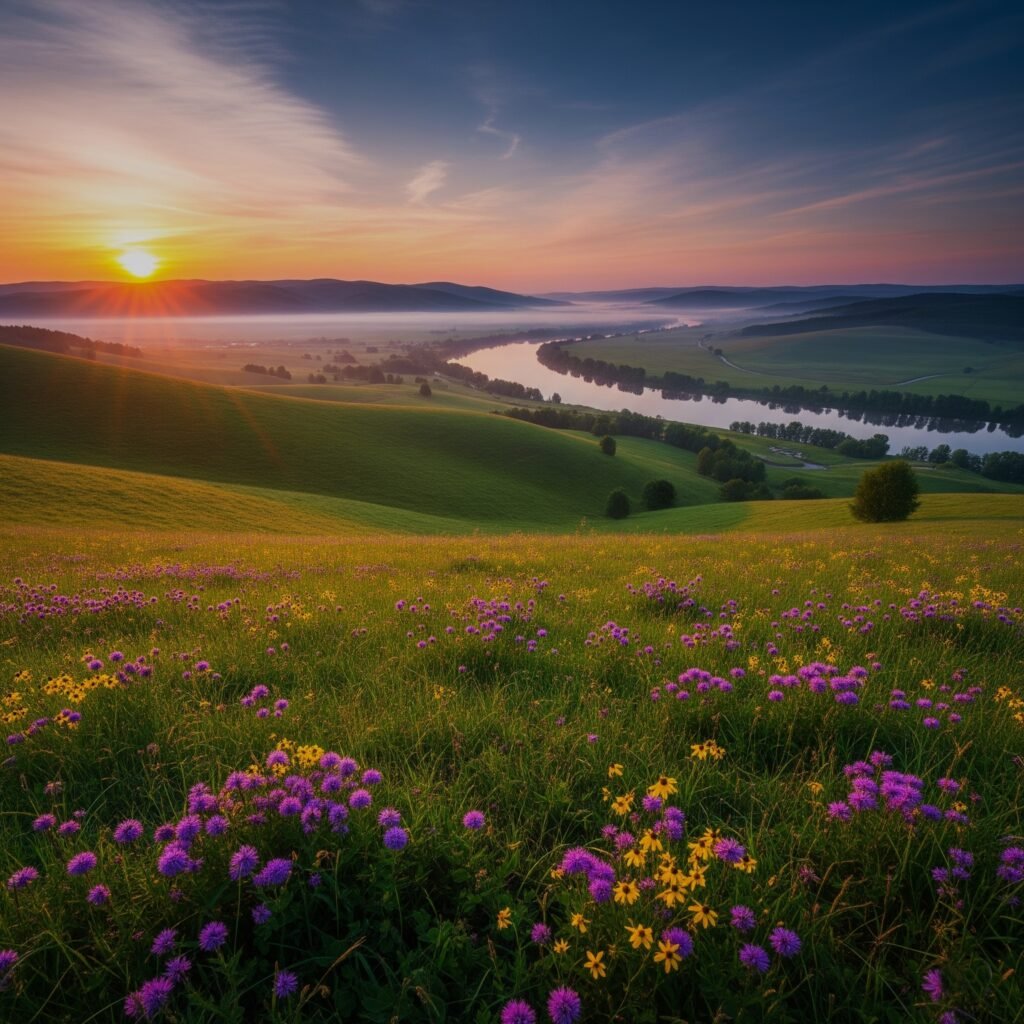
23. Ajuga (Ajuga reptans)
Colorful Carpet with Spectacular Spring Flower Show Ajuga creates some of the most spectacular spring flower displays you can imagine! Those dense spikes of blue, purple, pink, or white flowers rise above the colorful foliage like little botanical fireworks.
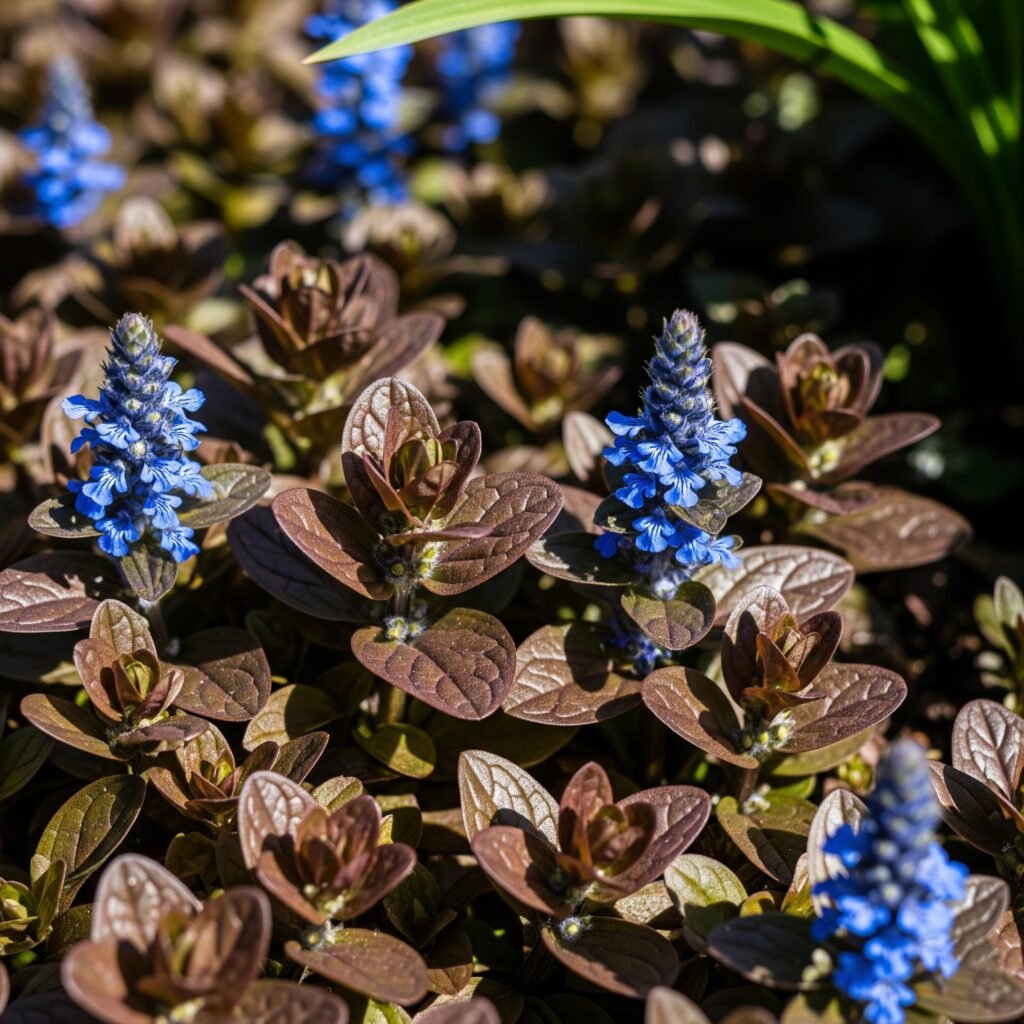
24. Sweet Woodruff (Galium odoratum)
Fragrant Old-World Charm for Difficult Areas Sweet woodruff brings this lovely old-world cottage garden feel to shade areas with its whorled leaves and delicate clusters of tiny white star-shaped flowers. When you brush against it or crush the leaves, it releases this sweet, hay-like fragrance that’s absolutely charming.
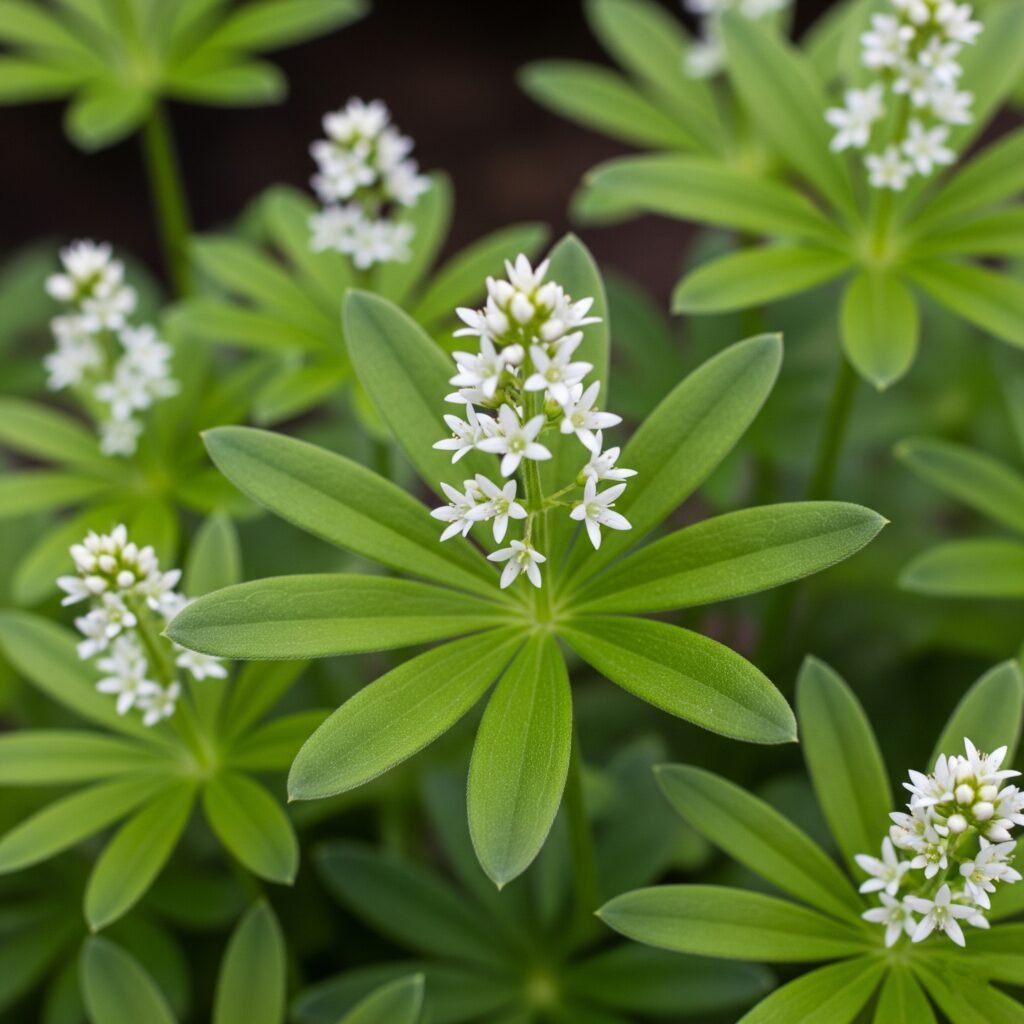
25. Lady’s Mantle (Alchemilla mollis)
Velvety Leaves That Capture Dewdrops Like Jewels Lady’s mantle is absolutely magical, especially after rain or on dewy mornings when those velvety, scalloped leaves hold water droplets like precious jewels! The soft, hairy foliage naturally repels deer while creating these beautiful, mounding clumps that work perfectly as edging or accent plants.
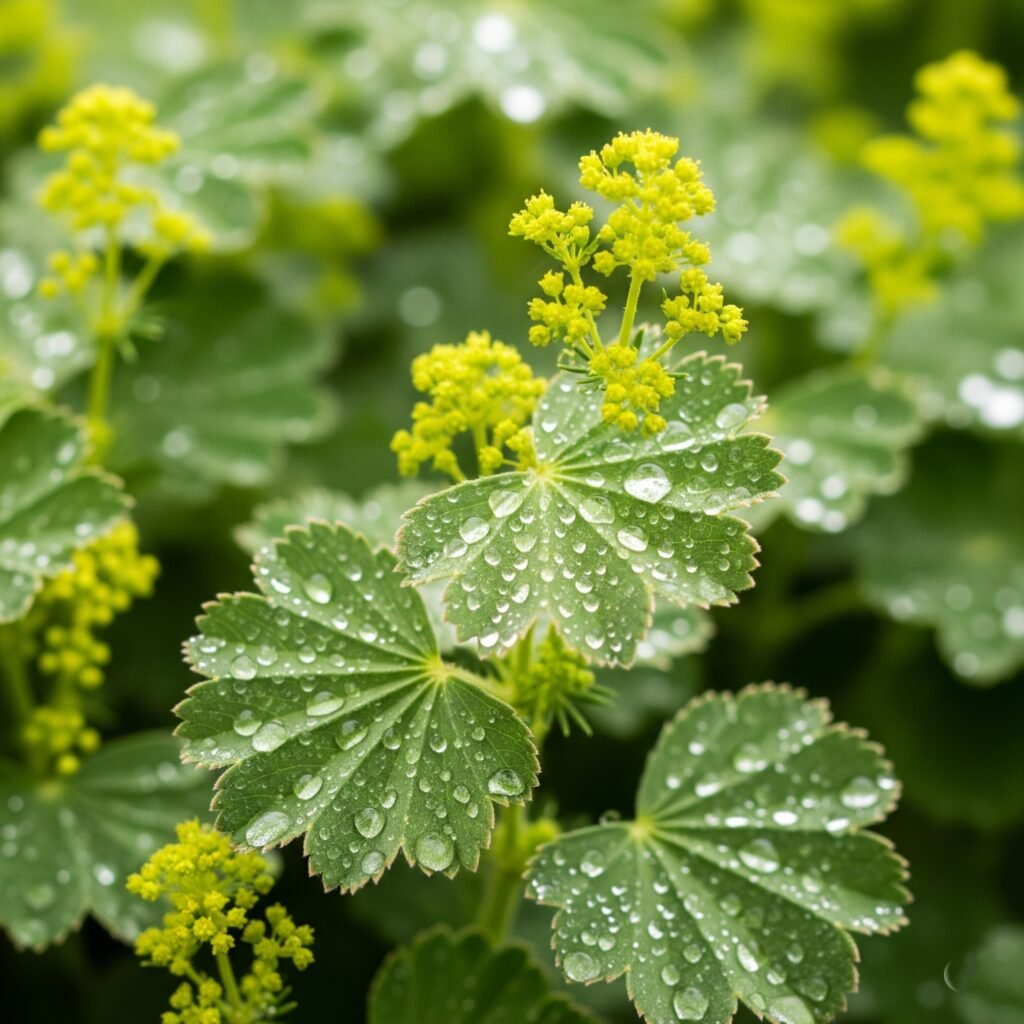
FAQs
Is there really such a thing as a completely deer proof plant?
Honestly? No and anyone who tells you otherwise is probably trying to sell you something! What we call “deer proof” plants are really deer-resistant, meaning deer will usually choose other options when they’re available. During extreme conditions like harsh winters or severe droughts, even hungry deer might nibble on plants they normally ignore.
Can I use these deer resistant plants in containers?
Absolutely! Many deer proof shade plants work beautifully in containers, which is perfect if you want to create mobile gardens or protect plants on patios and decks. Heuchera, smaller ferns, compact astilbe varieties, and brunnera all thrive in pots.
How long does it take to see results from deer-resistant plantings?
Most perennial shade plants take about a full growing season to really get established, but you’ll start seeing deer avoid the area almost immediately if you choose truly resistant species.
Should I remove my existing plants and start over?
Not necessarily! I usually recommend a gradual transition approach. Begin replacing the most damaged plants with resistant replacements, but remember to build on these deer-resistant plantings over time. This way, you can test what works in your own conditions too, as you still have some structure in your garden.

